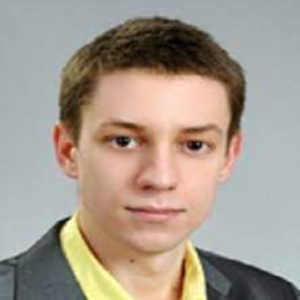Title : Biofunctionalized multifunctional nanoparticles as a potential strategy for a targeted cancer therapy
Abstract:
The main goal of our research was to design, synthesize and characterize the multifunctional nanosystems with a wide potentials for functionalization. We aimed on two kind of materials: the up-converting nanoparticles (UCNPs) of yttrium sodium fluorides and the superparamagnetic iron oxide nanoparticles.
The first kind of nanoparticles – NaYF4:Yb,Tm, characterized by up-converting properties generated by near infra-red light (NIR) excitation. The material can be applied in photodynamic therapy (PDT) and medical imaging. The UCNPs irradiated by 980 nm light convert this radiation to visible and ultra violet light. At the same time, due to a high energy generated light (UV-VIS), in aqueous environment the UCNPs generate reactive oxygen species (ROS) which are toxic for cancer cells. Furthermore, near Infra Red light (NIR), compared to visible and ultra violet light, penetrates deeper biological tissues. Thus, can help to expand the application area for a potential PDT.
Second type of nanoparticles – Fe3O4 – represent an alternative therapeutic strategy: magnetic hyperthermia. The nanoparticles have superparamagnetic properties (SPIONs) therefore, after exposition to an alternating magnetic field, generate heat. Local temperature enhancement can be toxic to selected pathological cells. Additionally, the nanoparticles do not self aggregate.The surface of UCNPs, after encapsulation by silica shell, allows to prepare multifunctional nanoconstructs for a future molecular targeted therapy. Thanks to the attachment of protein molecules, they could gain specificity and selectivity. Our preliminary studies reviled relatively low cellular toxicity, in vitro, which indicates their potential application in biology and medicine.



